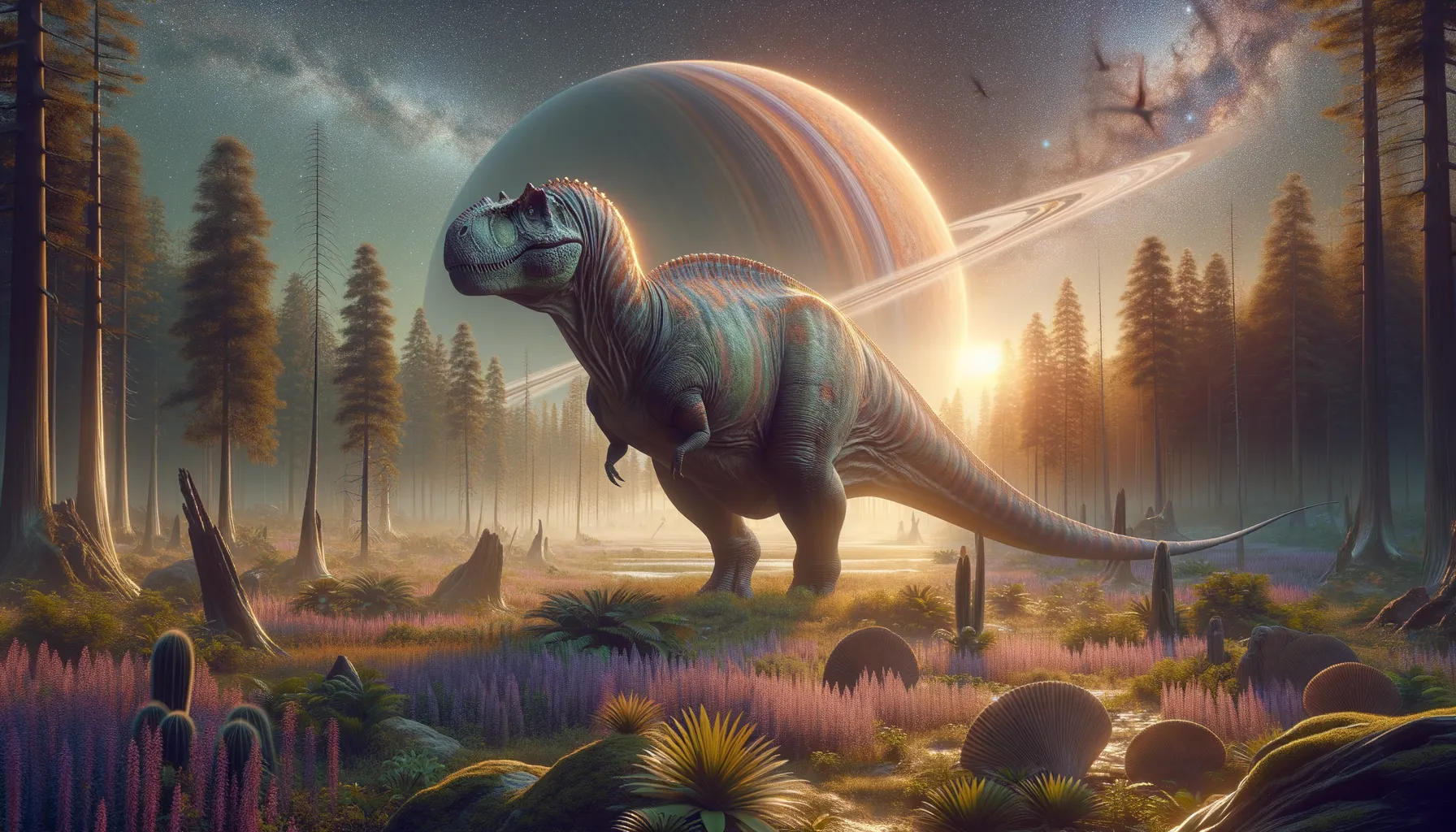
Colonosaurus
A gentle giant of the ancient Jurassic world.
Period
Jurassic
Length
About 10 meters long.
Height
Approximately 4 meters tall.
Weight
Around 3 tonnes.
Colonosaurus was a large herbivorous dinosaur from the Jurassic period, characterized by its substantial size and long tail. It likely roamed in herds over the lush landscapes of what is now known as North America. Its fossils offer notable insights into the flora it consumed, given the preserved plant material found alongside its remains, which highlights the diverse ecosystem it inhabited.
Diet
Colonosaurus primarily fed on a variety of plant species. Its diet consisted mostly of ferns, cycads, and other soft vegetation, which it could easily process with its blunt teeth.
Hunting
Being a herbivore, Colonosaurus was not a predator and did not hunt other animals. Instead, it foraged for edible plant matter in dense forests and open plains.
Environmental challenges
Colonosaurus faced several environmental challenges, such as fluctuating temperatures and changes in vegetation. These dinosaurs had to migrate seasonally in search of food and water. Competition for resources with other herbivorous species was also a significant challenge.
Speed
Moderate speed, typical of large herbivores.
Lifespan
Estimated around 70 years.
First discovery
Fossils were first identified in the late 19th century.
Fun Facts
- Colonosaurus was a plant-eating dinosaur that lived during the Late Cretaceous period.
- It was a sauropod, meaning it had a long neck and a large, bulky body.
- Colonosaurus was named after its discovery near the Columbia River area, though much about it remains a mystery.
- This dinosaur is believed to have left massive footprints due to its huge size.
- Colonosaurus was likely part of a herd, using its size for protection against predators.
- Paleontologists have found only partial fossils, so reconstructions often compare it to other better-known sauropods.
- Being herbivorous, Colonosaurus likely fed on ferns, cycads, and conifer leaves.
Growth and Development
Young Colonosaurus likely grew rapidly to reach a size that would protect them from predators. Fossil evidence suggests that juveniles had different dietary needs compared to adults, gradually adapting as they matured. Their development involved both structural and behavioral changes as they integrated into herd life.
Habitat
Colonosaurus thrived in humid environments with abundant plant life. A typical habitat included dense forests and open plains, which provided both food and protection. During the Jurassic period, North America offered a varied landscape with ample resources for these dinosaurs.
Interaction with other species
As a non-predatory herbivore, Colonosaurus coexisted peacefully with many species. Its presence likely influenced plant dispersion patterns and growth dynamics. It also attracted carnivores, which posed a threat but were deterred by the protective nature of its herd.
Natural lifespan
Colonosaurus could live naturally for up to 70 years.
Reproduction
Colonosaurus was an egg-laying species, with adults carefully selecting nesting sites. Mothers likely guarded nests to ensure the safety of their young from predators. Hatchlings were born independent, though they initially stayed close to the herd for protection.
Social behaviour
Colonosaurus was a social creature, likely moving in herds. These herds provided protection against predators and increased efficiency in locating food resources. Communication within the herd was essential for maintaining social bonds and alerting each other to dangers.
Fossil locations
Fossils of Colonosaurus have been primarily found in North American sedimentary rock layers. These discoveries have enhanced our understanding of the Jurassic ecosystem. The fossils are often found in areas that were once rich in vegetation, supporting the notion of their herbivorous diet.
